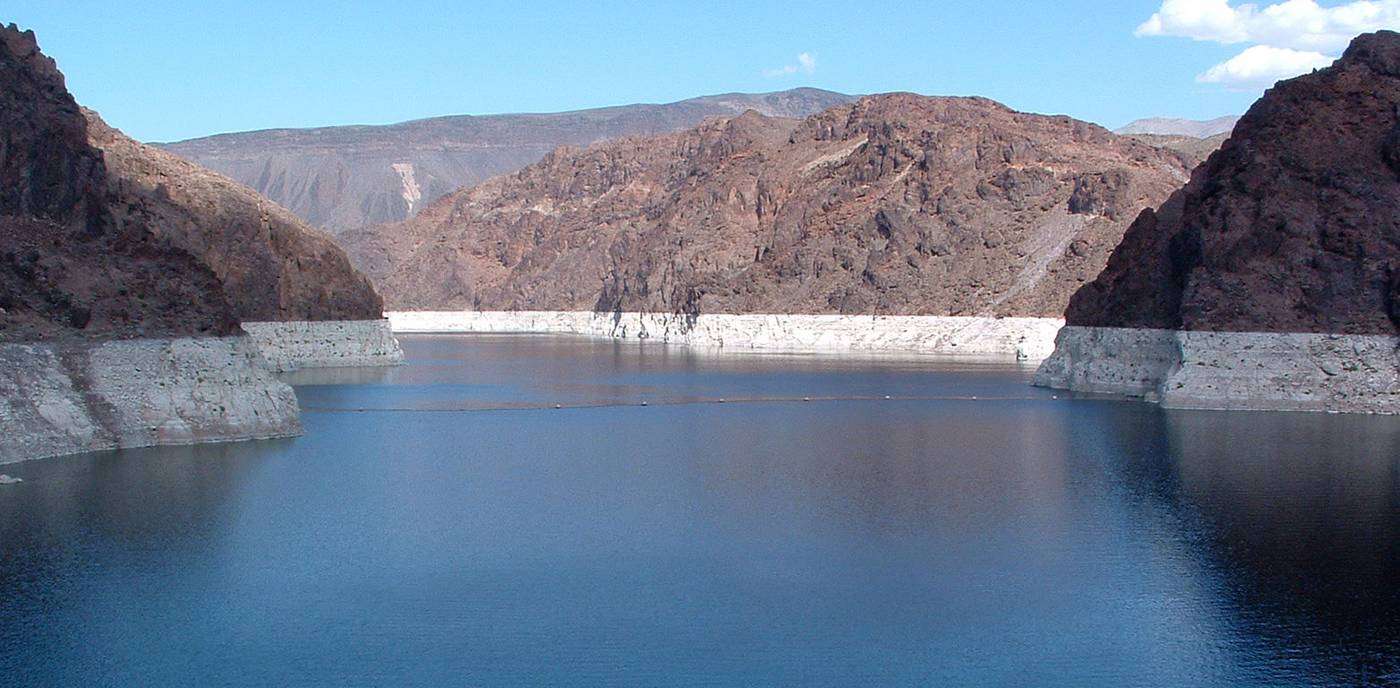The New Orleans Levees Held - Passing Their First Major Test Since Hurricane Katrina
Following a long and expensive building process, the major defense systems around New Orleans have held up in the face of Hurricane Ida

The story of the Southwest suffering under the second-driest period in 1,200 years is being turned into another one, of cooperation and dedication to preserving as much water as possible.
Lake Mead, the site of the Hoover Dam, and the chief water resource of a sprawling series of desert communities and metropolises, is falling.
But revealed in its falling to the lowest levels ever recorded is not only the "bathtub ring" of calcium buildups seen here, but decades of cooperative drought contingency planning and water conservation infrastructure implemented not only through the seven states that rely on the Colorado River Basin and Lake Mead, but Mexico too.
It was in 2007 that the seven states of California, Arizona, Nevada, New Mexico, Utah, Colorado, and Wyoming, as well as many tribes, and Mexico all agreed on a framework for use of the mighty Colorado River and Lake Mead, but in the face of the current 22-year drought, which led the federal government last Monday to declare the first ever shortage of water from Lake Mead, something more had to be done.
After years of tough negotiations, each state agreed to share the burden of future potential water shortages, pursuant to the 2019 Drought Contingency Plan. As Lake Mead is expected to drop below a depth of 1,075 feet next year, the first round of water cuts will come into effect in the states of Nevada and Arizona, and for Mexico. At 1,045 feet, it would be California's turn to take a cut.
"We haven't had litigation. If you look at any other river basin, they have litigation going like crazy," Patricia Aaron, spokeswoman for the U.S. Bureau of Reclamation, told the Christian Science Monitor. "Everybody is in this together. It gives me a lot of hope and a lot of confidence. There are a lot of dedicated, smart people working on this problem."
Mexico for their part led the way in a bilateral contingency plan in 2017. Under current agreements Mexico is delivered at minimum 1.5 million acre feet of the total volume of the Colorado River ever year.
"We knew it was the correct thing to do," CSM also heard from Roberto Salmon, former- Mexican commissioner of the International Boundary and Water Commission. "We are all trying to save the [Colorado River] basin. The livelihood of millions of people depends on it, including Mexico."
Several states have already invested millions into ensuring that when a water shortage in the Colorado or Lake Mead did arrive, they wouldn't be caught out.
In Nevada for example, Las Vegas recently described a seven-billion gallon reduction in water use from Lake Mead as having "little impact." This is a result of sophisticated water recycling that sends spent water back to Lake Mead, as well as the use of ornamental desert foliage for public parks and real estate.
In California, which draws about three times as much water as Mexico, water authorities built up reserves during the wet years of 2017 and 2019, while implementing additional storm drain and wastewater recovery methods to boost supply. The 19 million people living in Southern California now use 40% less water than they did in 1990, CSM reports.
Arizona has also "banked" water in Lake Mead, pre-delivering a 50% store of its yearly share through savings accumulated over a decade of diversifying its supply, for example by drawing on the Salt and Verde Rivers. Phoenix, which has exploded in size over the past two decades, has also reduced its water consumption by 30%.
South of the border, Mexico's agreement to be first on the chopping block for cuts from Lake Mead was penned alongside promises from California, Nevada, and Arizona to invest $31.5 million in conservation and infrastructure projects in the Mexicali Valley which will save 200,000 acre feet of water per year.
This U.S. citizen is accustomed to feeling there was no plan in the aftermath of natural disasters or dangerous natural phenomena, but in the deserts of the Southwest that is certainly not the case, and the inter-cooperation between state, tribe, city, and nation is something to behold.
PREVENT a Good News Drought by Sharing This Story…
Be the first to comment